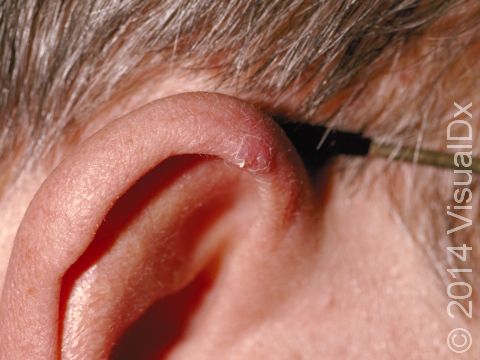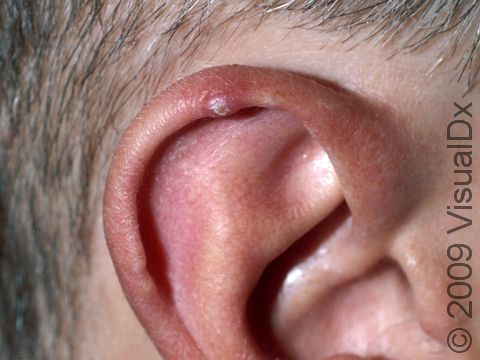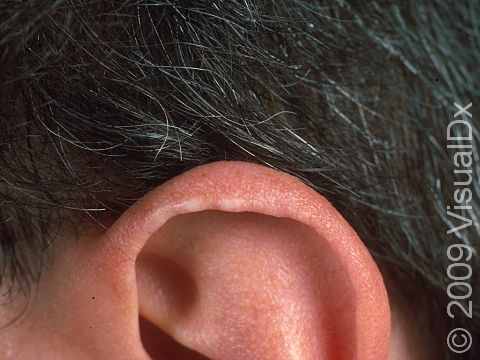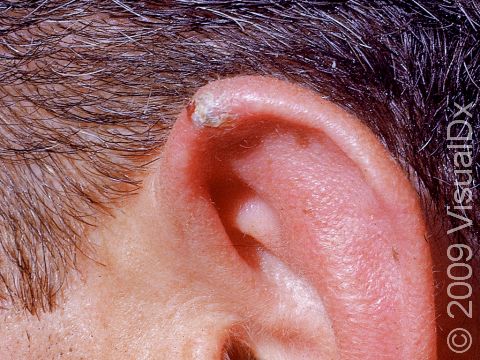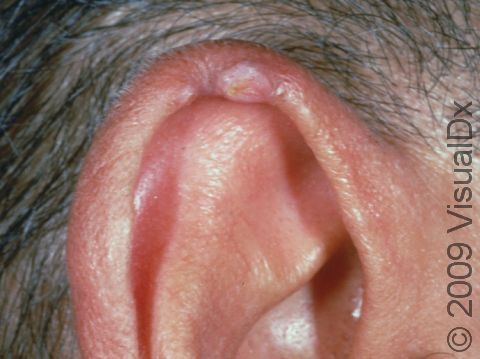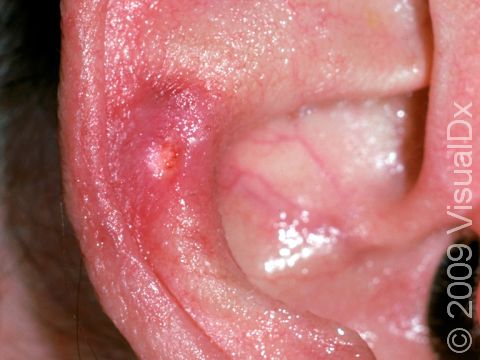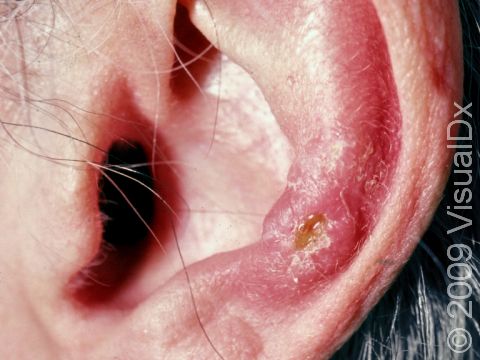Chondrodermatitis Nodularis Helicis
Chondrodermatitis nodularis helicis is a common inflammatory condition of the ear’s cartilage and overlying skin. The condition presents with a very tender papule (small, solid bump) on the outer ear.
Most people with chondrodermatitis nodularis helicis have a history of preferring to sleep on the same side of the body as the affected ear. Repeated pressure to the cartilage, such as from sleeping or cell phone use, is thought to cause this condition.
Who's At Risk?
Chondrodermatitis nodularis helicis can occur in any age, sex, or race / ethnicity, but most people affected are middle-aged-to-elderly males.
Signs & Symptoms
Chondrodermatitis nodularis helicis is often located on the skin of the outer rim of the ear. A small red or skin-colored papule is seen that may be extremely tender. Sometimes there is slight scaling or crust at the center of the lesion. For such a small lesion, it causes quite a bit of pain and tenderness, often disrupting sleep.
Self-Care Guidelines
While chondrodermatitis nodularis helicis will not go away on its own, you can prevent it from getting worse by avoiding pressure and repeated trauma to the affected ear. Sleeping on the other side of your body and using the other ear when talking on the phone or using headsets can often lessen trauma to the affected area.
Before sleeping, you can protect the affected area from pressure by using medical tape to attach a cotton ball just below the lesion or by surrounding the ear in a foam protector. There are commercially available donut pillows that may help protect the ear as well.
Treatments
Your medical professional may recommend other ways to protect the ear from further pressure.
To reduce pain and inflammation, the medical professional may:
- Inject triamcinolone into the affected area.
- Prescribe a strong steroid preparation, such as clobetasol propionate cream, to be applied to the affected area.
To remove the lesion, the medical professional may recommend:
- Surgical removal.
- Cryosurgery (freezing the area) or curettage (scraping the area).
Visit Urgency
If you have a painful lesion on the ear, seek evaluation by a medical professional. Chondrodermatitis nodularis helicis is not cancerous, but your medical professional may want to do a biopsy of the skin to rule out squamous cell carcinoma, a type of skin cancer, which looks similar.
Trusted Links
References
Bolognia J, Schaffer JV, Cerroni L. Dermatology. 4th ed. Philadelphia, PA: Elsevier; 2018.
James WD, Elston D, Treat JR, Rosenbach MA. Andrew’s Diseases of the Skin. 13th ed. Philadelphia, PA: Elsevier; 2019.
Kang S, Amagai M, Bruckner AL, et al. Fitzpatrick’s Dermatology. 9th ed. New York, NY: McGraw-Hill Education; 2019.
Last modified on June 17th, 2024 at 10:57 am

Not sure what to look for?
Try our new Rash and Skin Condition Finder
